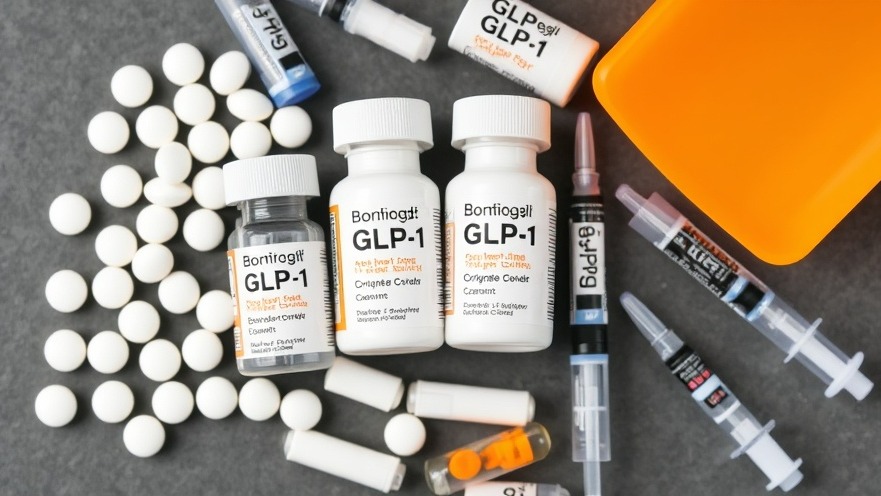
Understanding GLP-1 Drugs in Medicare: What You Need to Know
As of 2025, Medicare beneficiaries are facing significant changes in the coverage and costs associated with glucagon-like peptide-1 receptor agonists (GLP-1RAs), medications often prescribed for diabetes and increasingly for obesity-related conditions. The availability of these essential therapies remains broadly intact, with reimbursement rates over 85% for key drugs like oral semaglutide and tirzepatide, yet the uphill battle many patients face encapsulates the larger discussions about Medicare's future impact on healthcare costs. With nearly universal prior authorization and rising out-of-pocket costs, navigating this landscape will be crucial for healthcare providers, especially those in concierge medicine.
The Rising Cost of Access to GLP-1s
A recent research letter published in JAMA illustrates a troubling trend: out-of-pocket costs for GLP-1 medications nearly doubled from previous years, driven primarily by a shift from flat copayments to percentage-based coinsurance. Notably, the average out-of-pocket expenses escalated from around $138 in 2024 to as high as $196 in standalone Part D plans by 2025. This change is significant not only for patients reliant on these medications for chronic conditions but also for concierge practice owners who want to maintain patient satisfaction while managing costs.
Impact of the Inflation Reduction Act on Prior Authorization
The Inflation Reduction Act (IRA) has introduced a $2,000 annual out-of-pocket cap on Medicare Part D expenses, likely influencing insurers to tighten prior authorization rules in anticipation of increased financial accountability. In 2020, less than 5% of GLP-1 prescriptions required prior authorization, yet in 2025, that jumped precipitously to nearly 100%. The end result is a double-edged sword where patients are offered some protection from catastrophic expenses, yet face immediate barriers to obtaining their necessary medications.
What This Means for Concierge Medicine Practices
Concierge medical practice owners must consider the implications of these changes not just for their patients, but for their bottom line as well. With increasing prior authorization requirements and rising patient costs, practices may need to adapt their operational strategies to ensure they can still provide high-quality care without sacrificing access. Finding ways to navigate these insurance barriers, whether through streamlined processes or patient education about financial options, can be vital for maintaining their competitive edge.
Looking Ahead: Future Trends in Medicare Drug Coverage
As GLP-1 receptor agonists remain some of the highest-cost drugs patients encounter under Medicare, impending developments in drug pricing and insurance policies will warrant careful monitoring. It’s critical that healthcare practices stay informed about potential shifts in legislation affecting drug coverage. Engaging with patients about their options and leveraging technologies to manage medication adherence may also foster stronger patient-provider relationships.
Frequently Asked Questions: Key Insights for Providers
1.Will prior authorization make it harder for my patients to access GLP-1 medications?
Yes, nearly universal prior authorization could create significant hurdles, potentially delaying treatment.
2.How can I help my patients manage rising out-of-pocket costs?
Discuss financial assistance programs or alternative medications that may be more affordable.
3.What role does the Inflation Reduction Act play in this landscape?
It sets a cap on out-of-pocket expenses, but it may also encourage insurance companies to enforce stricter authorization processes.
As the Medicare landscape evolves, being proactive in navigating these changes will not only help your practice thrive but will also ensure your patients receive necessary care without undue financial strain. Engage with your patients and establish clear communication pathways to both educate them on their options and build trust within your practice.
 Add Row
Add Row  Add
Add 




Write A Comment